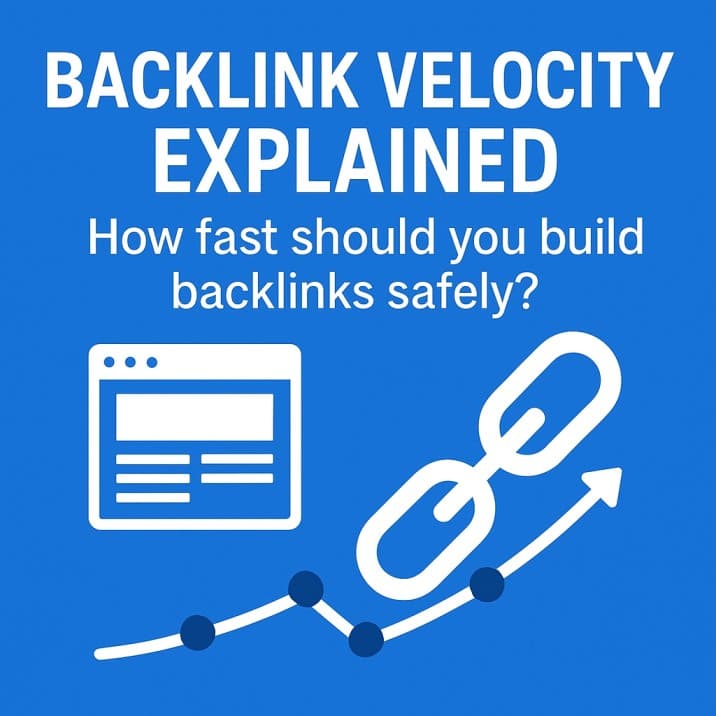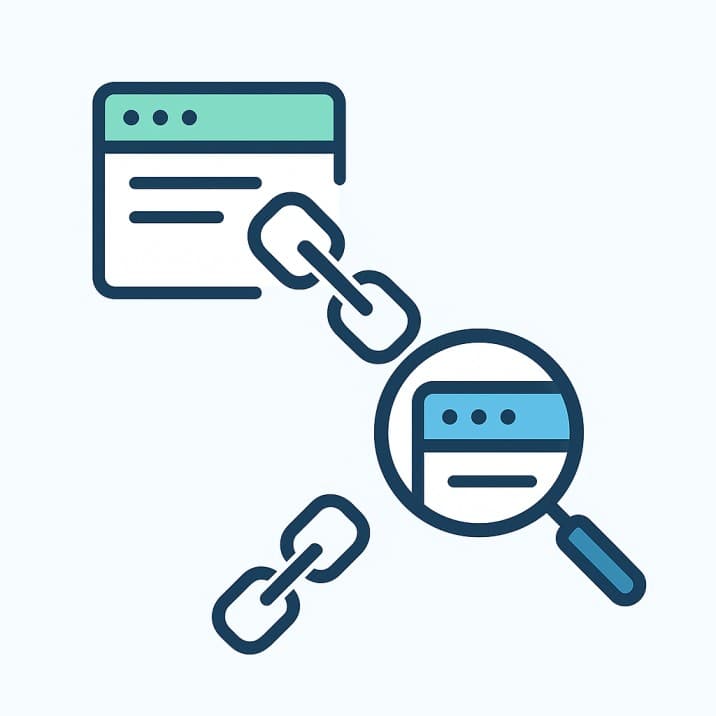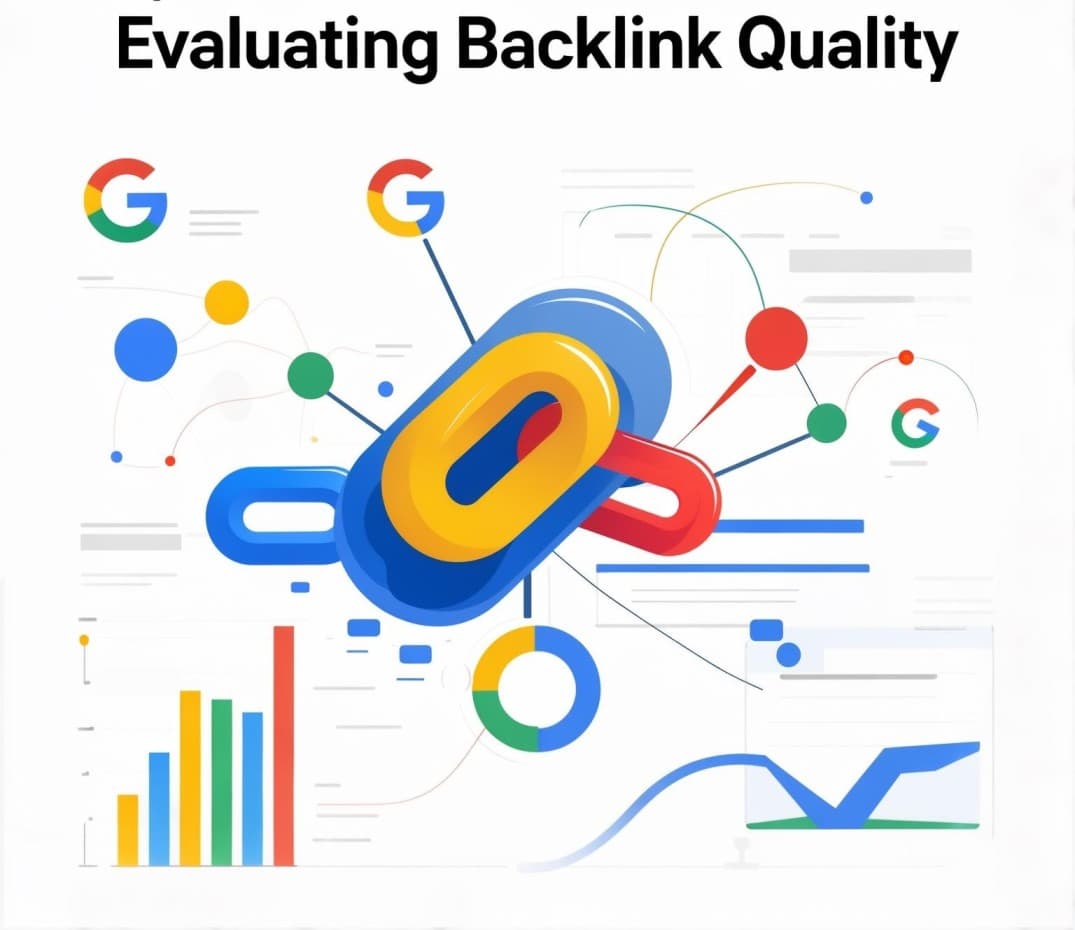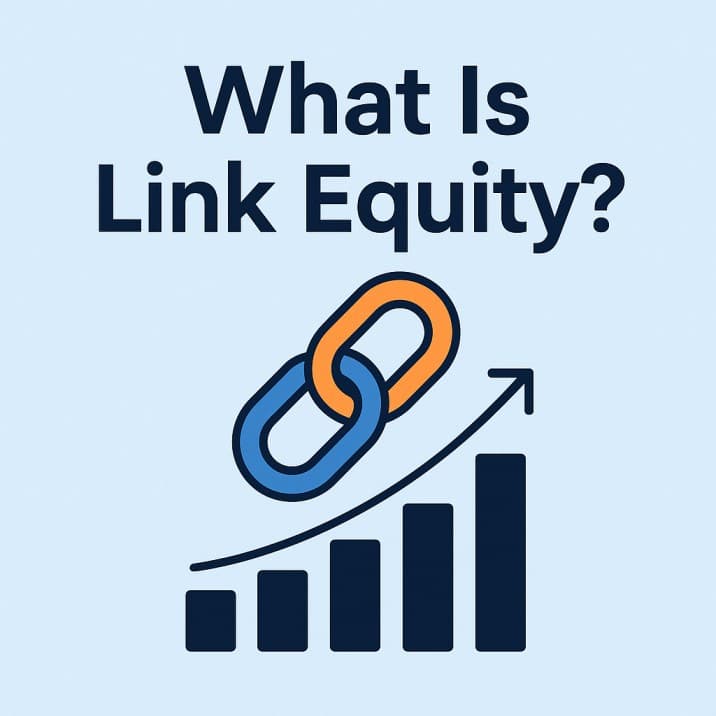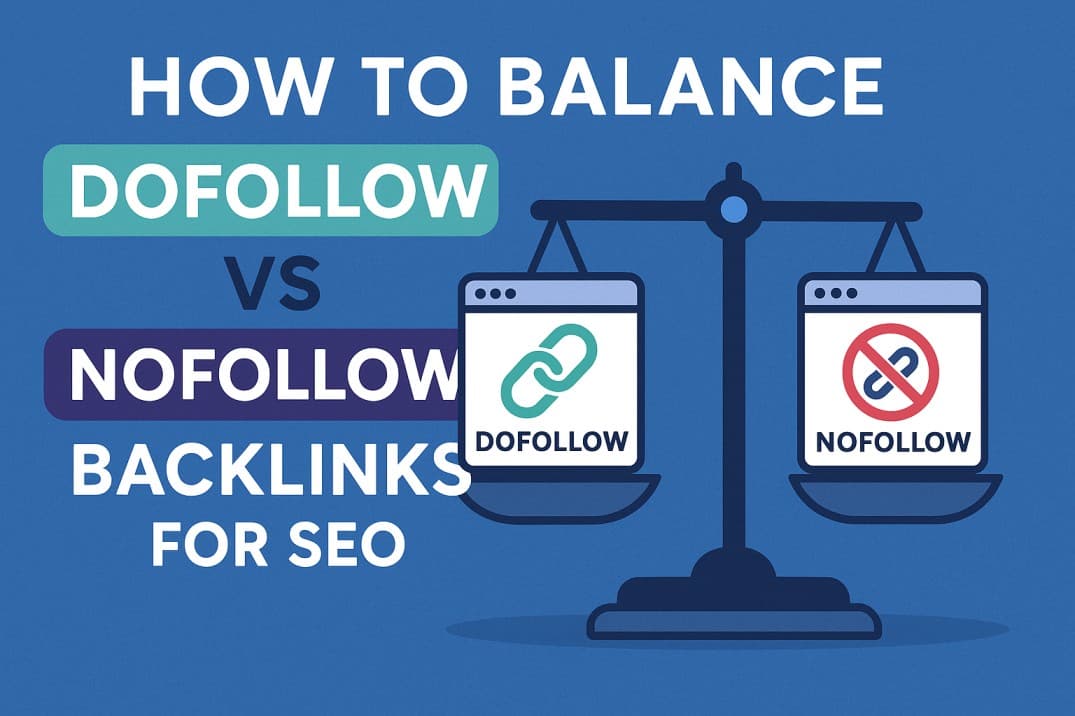
How to Balance Dofollow vs Nofollow Backlinks for Natural SEO Growth?
Backlinks play a key role in how Google understands and ranks a website. They work like votes of confidence from one site to another. When trusted sites link to you, search engines see your pages as more credible and relevant.
Not every backlink has the same impact on SEO. Some links pass ranking strength, while others only build awareness or send referral traffic. A healthy website needs both. Balancing dofollow and nofollow backlinks helps your site grow in a natural way and stay safe from algorithm updates.
Many website owners and SEO professionals chase only dofollow links because they transfer link equity. Yet, a mix of both link types signals authenticity. A natural backlink profile looks diverse, not manipulated.
In this guide, you will learn how dofollow and nofollow backlinks work, why both matter, and how to maintain a balanced link profile that supports long-term SEO growth.
Understanding the Basics: What Are Dofollow and Nofollow Backlinks?
Backlinks connect one website to another. They help search engines find new pages and understand which ones deserve higher visibility. Each backlink carries a small amount of value, often called link equity or link juice.
A dofollow backlink is the standard type of link. It tells search engines to follow the link and pass authority from one page to another. When your site receives dofollow backlinks from trusted websites, it gains more credibility and ranking strength. Most editorial links inside blogs, news sites, or resources are dofollow by default.
A nofollow backlink works differently. It uses a small tag, rel="nofollow", that tells search engines not to pass link equity. In the past, Google treated nofollow links as signals to ignore for ranking. Over time, that changed. Google now treats them as “hints” instead of strict rules, which means they can still influence visibility in some cases.
There are also two other link attributes that webmasters use:
- rel="sponsored" for paid or affiliate links.
- rel="ugc" for links created by users, such as in comments or forums.
Summary: Both dofollow and nofollow links have unique roles in building a strong, natural backlink profile. Dofollow links transfer SEO strength, while nofollow links improve link diversity and brand visibility.
Why Both Matter?: The Role of Dofollow and Nofollow Links in SEO
A balanced mix of dofollow and nofollow backlinks helps your website grow steadily. Both types serve different goals, yet they work together to build trust and visibility.
Dofollow backlinks pass link equity that improves a page’s authority. When high-quality websites link to your content, search engines read it as a sign of reliability. Over time, these signals can help your pages rank higher for important keywords. Dofollow links often come from guest posts, digital PR mentions, and editorial citations.
Nofollow backlinks may not pass ranking power directly, but they still matter. They drive referral traffic, strengthen brand recognition, and make your link profile look genuine. Links from platforms like YouTube, Reddit, and news comments are often nofollow, yet they expose your site to new audiences.
Search engines now look for link diversity. A website that has only dofollow backlinks might appear manipulative. A site with both dofollow and nofollow links looks more natural. This diversity shows that people mention and share your site across different platforms for various reasons, not just for SEO.
In short, dofollow links build authority, and nofollow links build trust and balance. Both are essential for long-term organic growth and a healthy SEO link profile.
The Concept of Link Equity and Natural Link Profile
Every backlink carries a certain level of value known as link equity or link juice. It represents the trust and authority that one page passes to another through a dofollow link. When a high-quality website links to your page, part of its reputation flows toward your site. That helps search engines view your content as more trustworthy.
The amount of link equity that flows depends on several factors. Page authority, link placement, relevance, and the number of outgoing links on the page all play a part. A link from a relevant, high-authority page usually carries more weight than one from a low-quality or unrelated source.
A natural backlink profile shows a healthy mix of dofollow and nofollow links from different domains. It includes links from blogs, forums, directories, social media, and mentions across the web. This variety shows that real users find value in your content.
Search engines use link patterns to detect manipulation. A profile filled only with dofollow links from the same kind of websites can appear suspicious. Balance and diversity make your link profile look organic. When your backlink mix looks genuine, your site is less likely to face algorithmic filters or manual actions.
Maintaining a natural backlink profile is not about chasing numbers. It is about earning links that reflect credibility, relevance, and user trust.
How to Analyze Your Current Dofollow vs Nofollow Ratio?
Understanding your backlink balance starts with a proper audit. A backlink audit shows how many dofollow and nofollow links your site has and where they come from. It helps identify gaps, risks, and growth opportunities.
1. Use Reliable SEO Tools
Start with tools like Google Search Console, Ahrefs, or Semrush. These platforms show all the backlinks pointing to your website. You can filter and separate dofollow and nofollow links to get a clear picture of your backlink profile.
2. Check the Ratio
Review how many of your backlinks are dofollow compared to nofollow. There is no fixed number to aim for, but the mix should feel organic. A balanced ratio shows that your links are earned naturally from varied sources.
3. Measure Diversity
A diverse link profile includes backlinks from different domains, industries, and content types. Look for mentions in blogs, forums, social platforms, and directories. A mix of sources signals a natural backlink pattern and helps avoid over-optimization.
4. Evaluate Link Quality
Focus on quality rather than quantity. A few links from trusted, relevant websites hold more value than hundreds from weak or unrelated pages. Avoid low-quality or spammy sites, as they can harm your site’s reputation.
5. Track Your Progress Over Time
Create a simple spreadsheet or use the reports from SEO tools to monitor backlink changes. A sudden spike in dofollow links from unrelated websites may appear manipulative. Regular tracking helps you spot unusual patterns early.
What’s an Ideal Dofollow to Nofollow Ratio?
Many website owners look for a perfect ratio between dofollow and nofollow backlinks. In reality, there is no single number that fits every website. The right balance depends on your niche, audience, and the way your links are earned. The key goal is to keep the profile natural, not forced.
1. There Is No Exact Formula
Google never shared a fixed rule for the ideal dofollow to nofollow ratio. Websites rank well with very different link distributions. What matters more is how genuine your backlink pattern looks. If your site grows naturally through real mentions, your ratio will balance itself over time.
2. Common Healthy Ranges
In many industries, a 60–70% dofollow and 30–40% nofollow split appears natural. This mix shows that your site earns both ranking power and brand exposure. However, the ratio can vary for different business types:
- E-commerce sites often attract more nofollow links from product listings and ads.
- Blogs and publishers usually gain more dofollow links through editorial mentions.
- Local businesses might have a higher share of nofollow links from directories and citations.
3. Focus on Natural Growth
Search engines value authenticity over numbers. Forcing an exact ratio or trying to remove nofollow links can backfire. A backlink profile with steady growth, variety, and relevance looks trustworthy.
4. Balance Comes from Diversity
Earning links from different websites, content types, and sources creates balance. When users naturally share and mention your brand, you gain both link types without extra effort. That kind of balance is what search engines trust most.
Strategies to Build a Balanced Backlink Profile
A balanced backlink profile helps your website grow safely and steadily. It shows search engines that people link to your content for real value, not manipulation. Both dofollow and nofollow backlinks are important, and the goal is to earn them through useful, relevant, and shareable content.
1. Earn Natural Dofollow Links
The best dofollow backlinks come from genuine recommendations. Focus on creating linkable assets, content that people want to cite and share.
- Publish in-depth guides and case studies. Data-backed content attracts editorial links from blogs and news sites.
- Write guest posts on relevant sites. Offer value and insights that fit the host site’s audience.
- Use digital PR. Reach out to journalists or publishers when you have something newsworthy to share.
2. Attract Nofollow Links Smartly
Nofollow backlinks build exposure and traffic. They also make your backlink mix look more natural.
- Leverage social media platforms. Links from places like YouTube, LinkedIn, and Reddit bring visitors and brand visibility.
- Get mentioned in press releases or online discussions. Even if the links are nofollow, they can still send valuable traffic.
- List your business in niche directories and community pages. These links often carry nofollow tags but improve trust signals.
3. Maintain Link Diversity
Diversify your backlink sources. Get links from blogs, forums, news outlets, and educational sites when possible. Avoid depending on one single strategy. A mix of both link types from different platforms looks healthy to search engines.
4. Focus on Relevance and Context
A dofollow link from an unrelated site carries little value. A nofollow link from a trusted, topic-related source can still help your visibility. Always aim for relevance first. Context tells search engines that your link belongs there.
5. Build Relationships, Not Just Links
Good backlinks often come from genuine connections. Engage with people in your industry. Contribute insights, collaborate on content, or share expert opinions. When relationships grow naturally, backlinks follow.
Common Mistakes to Avoid When Balancing Dofollow and Nofollow Backlinks for SEO
Even experienced website owners can make errors that hurt link-building efforts. Avoiding these mistakes helps maintain a natural backlink profile and long-term SEO growth.
1. Focusing Only on Dofollow Links: Chasing only dofollow backlinks may seem like a shortcut to ranking. Overdoing it can make your link profile look unnatural. Nofollow links still bring traffic, exposure, and credibility. A mix is necessary for a healthy SEO strategy.
2. Ignoring Link Quality: A large number of links from low-quality or spammy sites can harm your website. High-quality, relevant backlinks from trusted sources matter more than volume.
3. Overusing Exact Match Anchor Text: Using the same keywords repeatedly in your anchor text can trigger penalties. Natural link profiles use varied and contextually relevant anchors.
4. Building Links Too Fast: A sudden spike in backlinks, especially dofollow links, can look manipulative to search engines. Growth should appear steady and organic.
5. Neglecting Nofollow Links: Many assume nofollow links are useless. In reality, they diversify your link profile, drive referral traffic, and strengthen brand signals.
6. Not Tracking Backlink Trends: Failing to monitor your link profile over time can let harmful or irrelevant links accumulate. Regular audits help maintain a balanced ratio and protect your SEO.
Expert Insights: What Google Actually Says About Nofollow and Dofollow Links
Understanding Google’s perspective helps guide backlink strategies. Official statements from Google clarify how search engines treat different link types and why balance matters.
1. Nofollow Links Are Not Completely Ignored
Google treats nofollow links as hints rather than strict rules. While they may not pass full link equity, they can influence search rankings indirectly. Nofollow links contribute to link diversity, visibility, and traffic, which are valuable signals for search engines.
2. Dofollow Links Pass Authority
Dofollow backlinks transfer link equity from one page to another. They play a direct role in improving a page’s authority and ranking potential. Google prioritizes high-quality, relevant links when assessing which pages deserve higher positions.
3. Link Diversity Is Key
Google favors websites with a natural mix of dofollow and nofollow backlinks. A diverse backlink profile signals that your website is earning links organically, rather than relying on manipulative tactics.
4. Avoid Manipulative Practices
Google warns against buying links or creating them solely for SEO purposes. Links should be earned because your content provides value, not for ranking manipulation. Unnatural link patterns can trigger algorithmic filters or manual penalties.
5. Monitor Guidance Updates
Google occasionally updates how it treats link attributes. Staying informed ensures your link-building strategy aligns with current best practices. Following official resources like Google Search Central can provide accurate guidance.
Summary: Google values authenticity, diversity, and relevance. Both dofollow and nofollow backlinks contribute to a healthy SEO strategy when earned naturally.
Actionable Checklist: How to Maintain a Healthy Dofollow and Nofollow Backlink Balance
Maintaining a balanced backlink profile requires regular effort and monitoring. Use this checklist to keep your SEO growth natural and safe.
1. Conduct Regular Backlink Audits: Check your backlinks every few months using tools like Ahrefs, Semrush, or Google Search Console. Separate dofollow and nofollow links to understand your current ratio.
2. Focus on Quality Over Quantity: Prioritize links from relevant, trustworthy websites. Avoid low-quality or spammy links, even if they are dofollow.
3. Maintain Link Diversity: Earn backlinks from different types of sites, blogs, news outlets, forums, social media, and directories. Both dofollow and nofollow links are important.
4. Monitor Anchor Text: Keep anchor text varied and contextually relevant. Avoid repeating exact match keywords too often.
5. Track Link Growth Over Time: Look for unusual spikes in backlinks. Steady, organic growth is a signal of a healthy link profile.
6. Combine Outreach with Content Marketing: Create linkable content like guides, infographics, or case studies. Combine it with outreach, guest posting, and PR to earn natural links.
7. Review and Adjust Strategy: Regularly evaluate your backlink profile and adjust your approach if the ratio or diversity looks unnatural.
Wrapping Up
A strong backlink strategy requires both dofollow and nofollow links. Dofollow links build authority and pass link equity, while nofollow links add diversity, brand visibility, and referral traffic.
A natural backlink profile looks diverse, relevant, and steadily growing. Focusing only on one type of link or chasing exact ratios can harm your SEO. Regular audits, quality link building, and monitoring link trends ensure long-term organic growth.
By earning backlinks naturally, maintaining diversity, and following Google’s best practices, website owners can build trust with both users and search engines. Balance is not about numbers but authenticity, relevance, and sustainable growth.
Frequently Asked Questions
1. Do nofollow links help SEO indirectly?
Yes. Nofollow links can drive traffic, increase brand exposure, and make your backlink profile look natural. These signals indirectly support SEO growth.
2. Should I disavow nofollow backlinks?
Disavowing is usually unnecessary unless the link comes from a spammy or harmful website. Nofollow links from legitimate sites are safe and beneficial.
3. What happens if I have too many dofollow links?
Too many dofollow links, especially from low-quality sources, can look manipulative. Google may view the profile as unnatural, which can impact rankings.
4. Can nofollow links improve website visibility?
Yes. They bring referral traffic, social proof, and brand mentions that can indirectly boost SEO performance.
5. How often should I check my backlink ratio?
Quarterly or biannual audits are recommended. Regular monitoring helps you maintain balance and spot unusual link patterns early.





